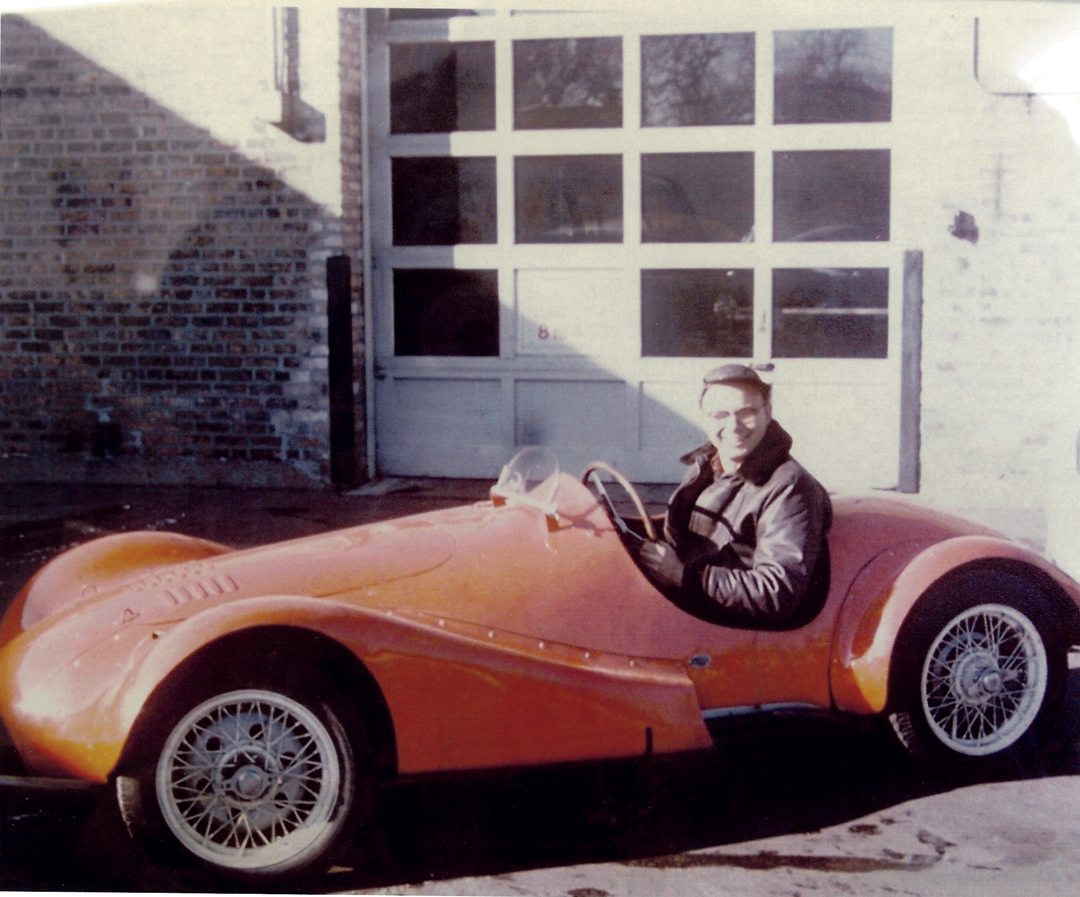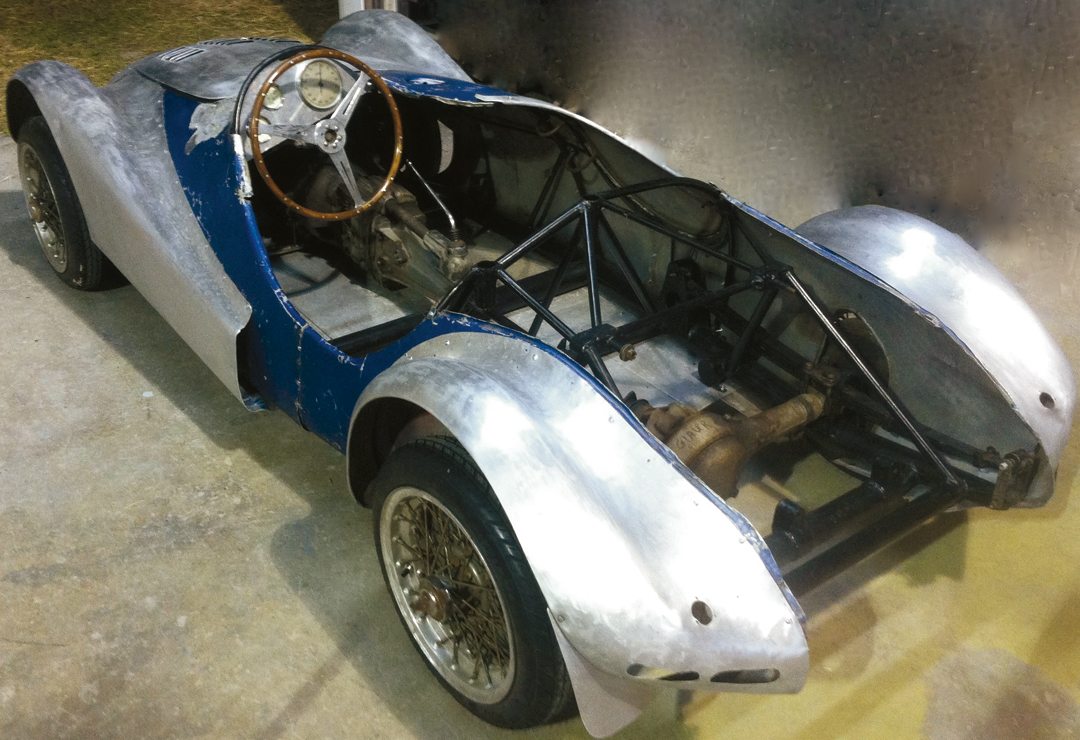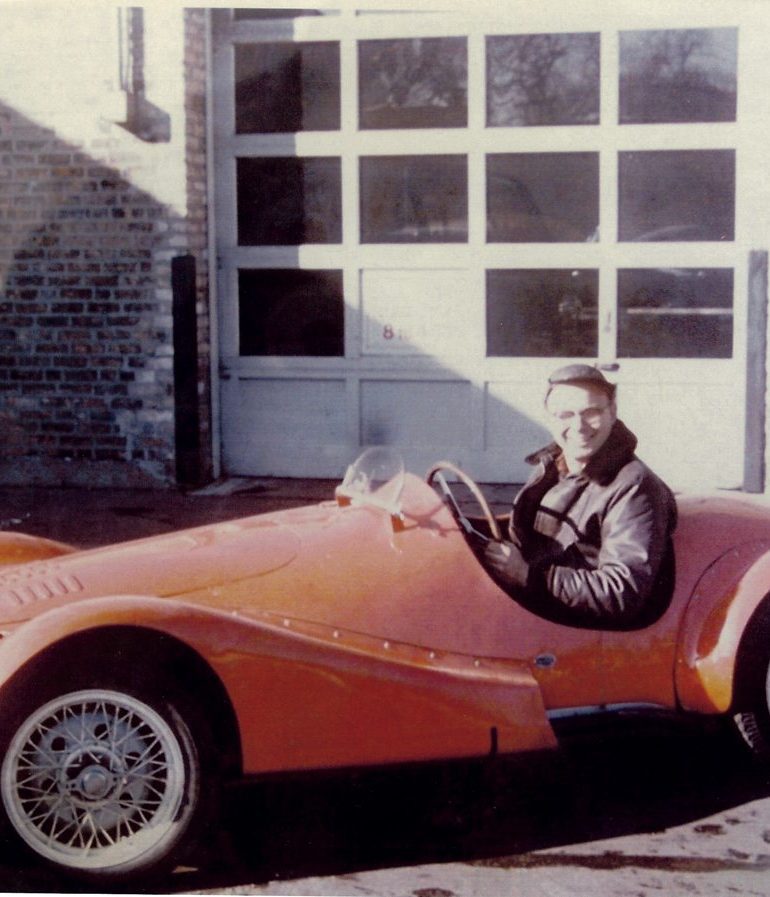I’ve been hiding something from you. I’m not proud of it, and it’s been going on for way too long. Before you know it, it will have been ten years. And I know if I don’t come clean now, I never will.
So here goes…
In December of 2005 I abandoned my extremely pregnant wife and hopped a flight to California. Although I’d be gone less than 24 hours, it was not a trip I needed to make. Mrs. Brinker was feeling all the discomfort, aches and pains that accompany being “with child,” and I should have been there every second to tend to her every need. But like all pathetic stories in our hobby, mine starts this way…there was a car. Not just any car. It was Italian; it was aluminum; and it was built and raced in the 1950s…by some of the coolest people. And it competed with a high-revving, Italian DOHC engine with two early sandcast Weber carburetors. It had been hiding in the rafters of a place in Northern California for decades. And I had to have it.

So I hopped a flight, headed west and the next morning I was standing in front of this magnificent little jewel-box-of-a-car at the owner’s lair. The chassis was in remarkable condition and the aluminum body was largely intact. Several other original goodies were present including the Borrani wire wheels, the floor pan and the steering wheel. What choice did I have? Before noon I had the car in an enclosed trailer with a Bill of Sale in hand. And then the prideful call to the wife. Can you imagine her excitement?
The earliest known information on this one-off, 1953 Gilco 203 Moretti Twin Cam “Giaur” is its American racing history. The car’s first known owner was Chicago-based Paul Gougelman who began racing it in the Midwest in 1954. Gougelman bought the car from well-known East Coast dealer and importer Tony Pompeo. In 1954 and part of 1955, Gougelman entered the car as “Lancia,” presumably because it is believed by some to have had a Lancia Ardea engine. In 1955, Gougelman bought a 750-cc Moretti twin-cam engine and had it installed in the car. After that it was raced as “Moretti Competition.” At this point in the car’s life it was red and raced without a head-fairing.
In late 1955 or early 1956, Gougelman sold the car to Sandy MacArthur who originally raced it as a “Moretti Special,” but later raced it as “Giaur Mille Miglia” or “Giaur” or “Giaur Moretti.” Toward the end of 1956, MacArthur removed the Moretti twin-cam and had a Kiekhaefer outboard Mercury two-stroke engine installed. He then raced the car as “Giaur Mercury.” At some point during MacArthur’s ownership the car was painted blue and a head-fairing was installed. John Wessale owned the car from 1958 to 1963 and always raced it with a Mercury two-stroke. However, at some point during his ownership he had the engine moved to the rear of the car. Bob Snider owned and raced the car with the Mercury in the rear in 1963 and 1964, and even won a regional championship with it in ’64.
The aluminum bodywork very closely resembles that of a Taraschi Giaur Champion with removable butterfly-wing fenders. The car does not appear to have a “BT” chassis number and the chassis is different from the other Giaur Champion cars. Several experts who have examined the car are confident that the chassis was built by Gilco, and measuring the wheelbase strongly suggests that it’s a Gilco 203 unit (the wheelbase measures 203 millimeters).
One item that has been important in identifying the car throughout its long history is the body tag that has always been with the car. According to the tag, the aluminum body was fabricated by Luigi Fabbri of Carrozzera Auto-Moto of Bologna. The body tag is quite distinctive and can be seen on the car in all of the 1950s USA racing photos I’ve collected.

When I acquired the car it was without an engine. Not a problem. How hard could it possibly be to acquire a proper 750-cc Moretti twin-cam power-maker? Six years and 4,000 phone calls later (and a wad of bills too embarrassing to mention) a crate containing all the major engine components arrived at my shop.
Although I have not yet begun the restoration (soon!), the custodianship of this car has been an amazing journey with many great friends made along the way. Paul Gougelman, son of the first owner, provided me with incredible period photographs, as well as his father’s racing trophies related to the car. A few years back I was able to attend a Chicago “Lunch Bunch” get together where I met Fred Egloff, Henry Adamson and many others who had known Gougelman and MacArthur for much of their lives. After a meal of delicious food and racing stories, the Lunch Bunch surprised me with a visit to MacArthur’s race shop where I met his son Jim. Along the way I have also befriended Wessale’s wonderful daughter Kay, who spent hours going through her father’s racing records and provided me with historical artifacts documenting more than 20 races for the Gilco during the ’58 to ’63 timeframe. I was also able to speak with Snyder, in his 80s and nearly deaf from racing the car with the painfully loud Mercury outboard just behind his head. Finally, Julian Silverberg, who shot amazing racing photographs in period, has generously shared his work with me, never allowing me to pay for anything. As a result of a bit of researching and so many people’s generosity, I’ve been able to document over 50 races for this car between 1954 and 1964. More specifically, thus far I’ve been able to document 10 outright class wins for the Gilco with several more podium finishes. Of particular interest, the car finished 3rd in class at Nassau on December 5, 1956, with MacArthur behind the wheel.
Although the voyage with this racing machine has been absolutely splendid, I will forever be ashamed for stepping out on my pregnant wife to chase a car. In the end I suppose she has forgiven me. Because, as of this morning, I still have both of them.




